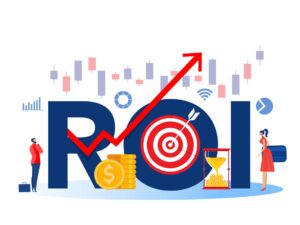Threat intelligence is a critical component of any manufacturing facility’s OT cybersecurity strategy. This article will provide insight into the most prevalent and pressing security risks facing companies today. It will provide organizations with the ability to understand how an attack might manifest, where it could come from, what tools are being used in these attacks, and what countermeasures can be put in place to protect against them.
As attacks on manufacturers increase, the number of ransomware attacks skyrocketed in 2020 – an increase of about 715% in 2020, according to the Mid-Year Threat Landscape Report 2020 by BitDefender. It’s more important than ever that organizations understand how threat intelligence may help them identify where they’re most vulnerable. The 10 dimensions of Manufacturing OT Threat Intelligence include:
- Focus on Manufacturing Asset Protection – Understanding what your OT assets are exposed to and what is an effective way to prioritize protection efforts. Consider an attacker with access to your server and the ability to control operations via a browser plugin. Even standalone assets might be exposed if a service personnel’s login is enabled through their programming devices.
- Focus on Threats – Understanding the threats to your assets and how they might be able to exploit them, will help you prioritize vulnerabilities based on threat potential.
- Know Your Vulnerabilities – An asset’s vulnerability is often linked to its exposure, which can be improved by segregating assets from networks and using secure protocols for device-to-device communication.
- Prioritize Threats – While not all threats are equally dangerous, understanding the potential impact of specific threats can help prioritize which ones to address first based on the amount of damage they could do in your manufacturing environment.
- Common Vulnerability Exposure CVE – Manufacturing organizations often face a lot of pressure to identify Your Vulnerabilities – Understanding where your assets are exposed and determining whether they’re exploitable should be the first step in identifying and prioritizing vulnerabilities. The CVE study is designed to provide businesses with the information they need to make well-informed decisions about whether or not they should be concerned about certain CVEs.
- Identify Threat Actors – Assessing your potential threats will help you determine how likely it is for an attack to come from each actor, as well as what type of access or resources would be necessary to carry out the attack.
- Know Your Indicators of Compromise – Knowing your indicators of compromise should be part of your planning process. The more information you have, the better prepared you’ll be should an incident occur.
- Prioritize Detection & Prevention – By understanding how your assets are exposed, what types of threats target them and what damage they could cause, you can focus on detection and prevention methods that will protect the most critical assets. Knowing your indicators of compromise should be part of your planning process. The more information you have, the better prepared you’ll be should an incident occur.
- Prioritize Resources – By understanding where your organization is most likely to be attacked, what types of resources attackers would need and which attack techniques are best suited for your environment, we can prioritize resources based on their ability to detect or prevent a threat.
- Know Your Countermeasures – Each threat has a different applicability to your environment, so understanding the countermeasures you have in place will help determine whether they could be effective against a specific threat. If not, knowing which particular countermeasure would be best-suited for that threat will help ensure it is deployed appropriately and as a part of a comprehensive strategy.
The growing number of ransomware assaults on OT operators demonstrates the significance of system stability. Such malware assaults result in major plant shutdowns, resulting in significant financial losses. While manufacturing may not appear to be a high-risk industry, eight of the nine attacks on industrial enterprises last year resulted in plant closures across the board.
The goal of this topic was to help you prioritize threats and vulnerabilities in your environment so that you can take the right actions to protect your assets from cyberattacks. We hope it has been helpful for you! If any other questions arise about these critical topics, please feel free to contact our team via at +6012 663 1920 or send an email over to enquiry@quantumcompute.io





